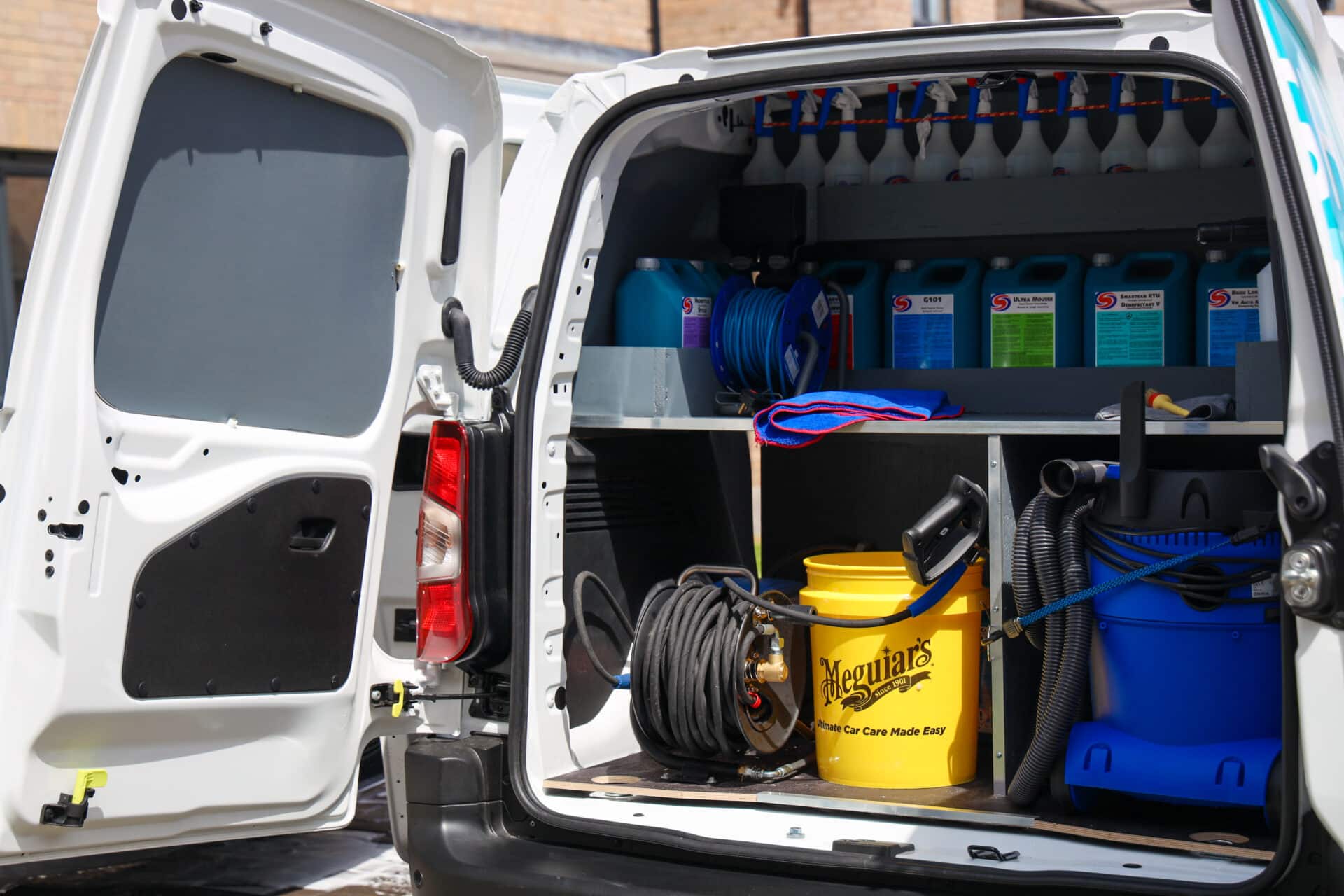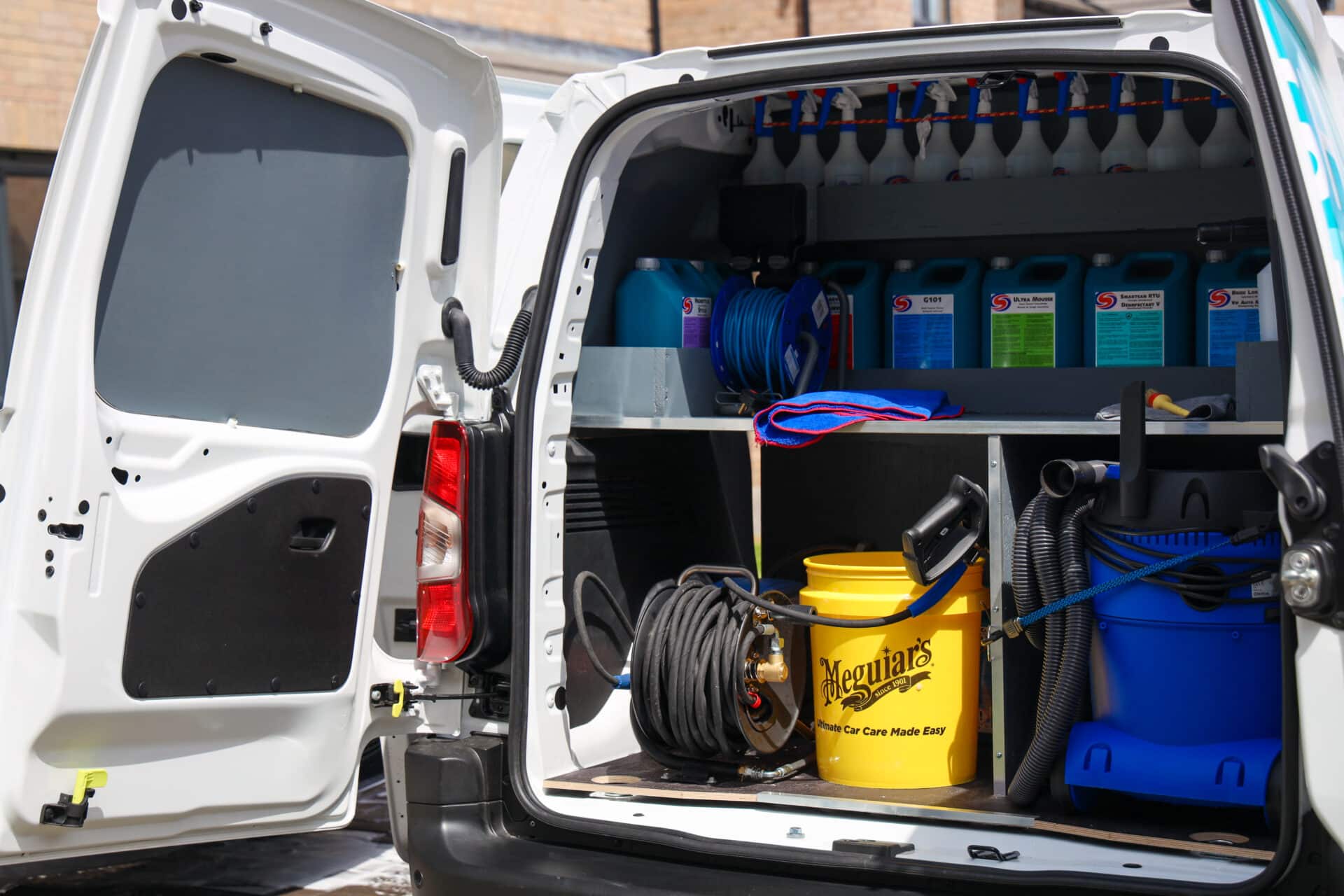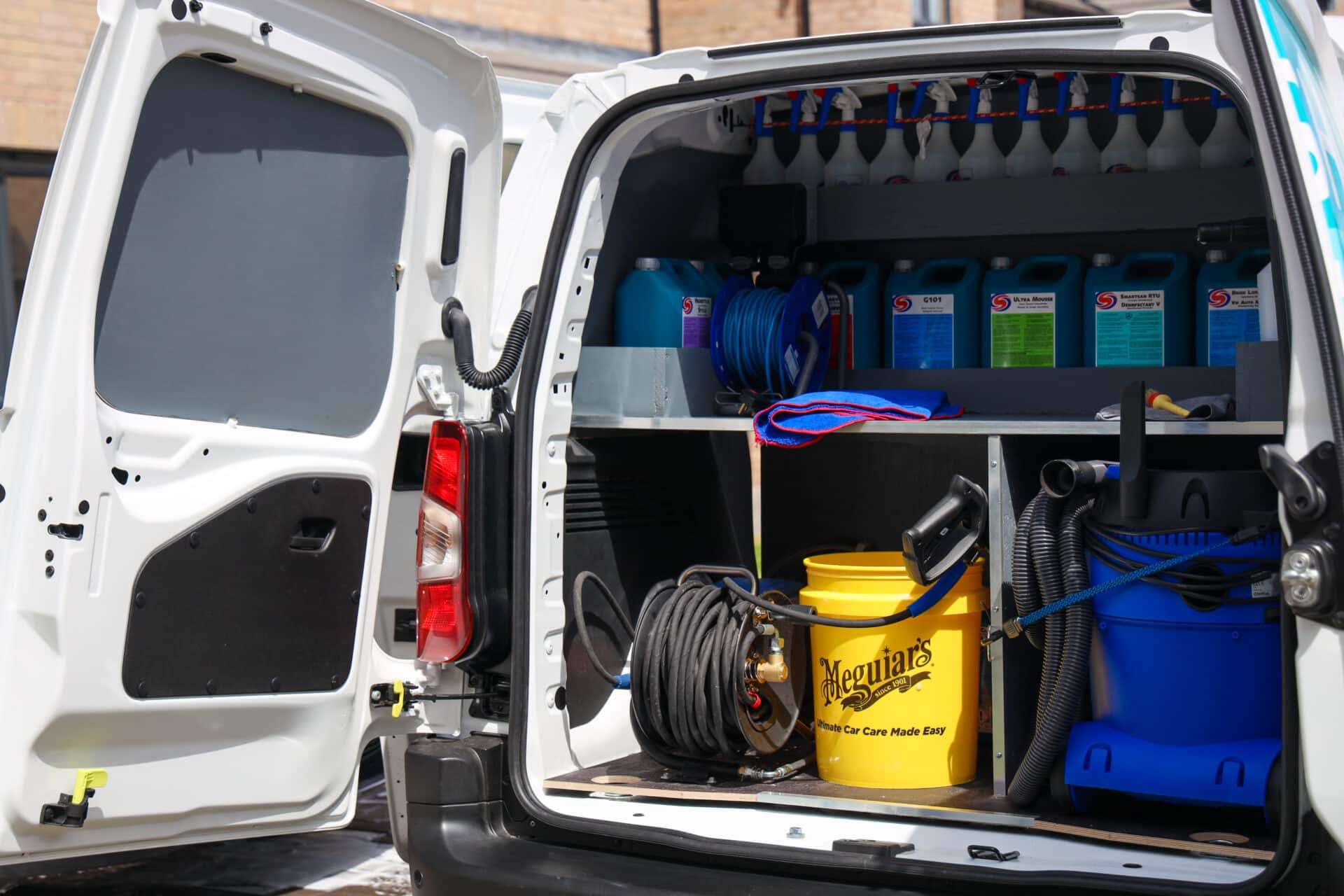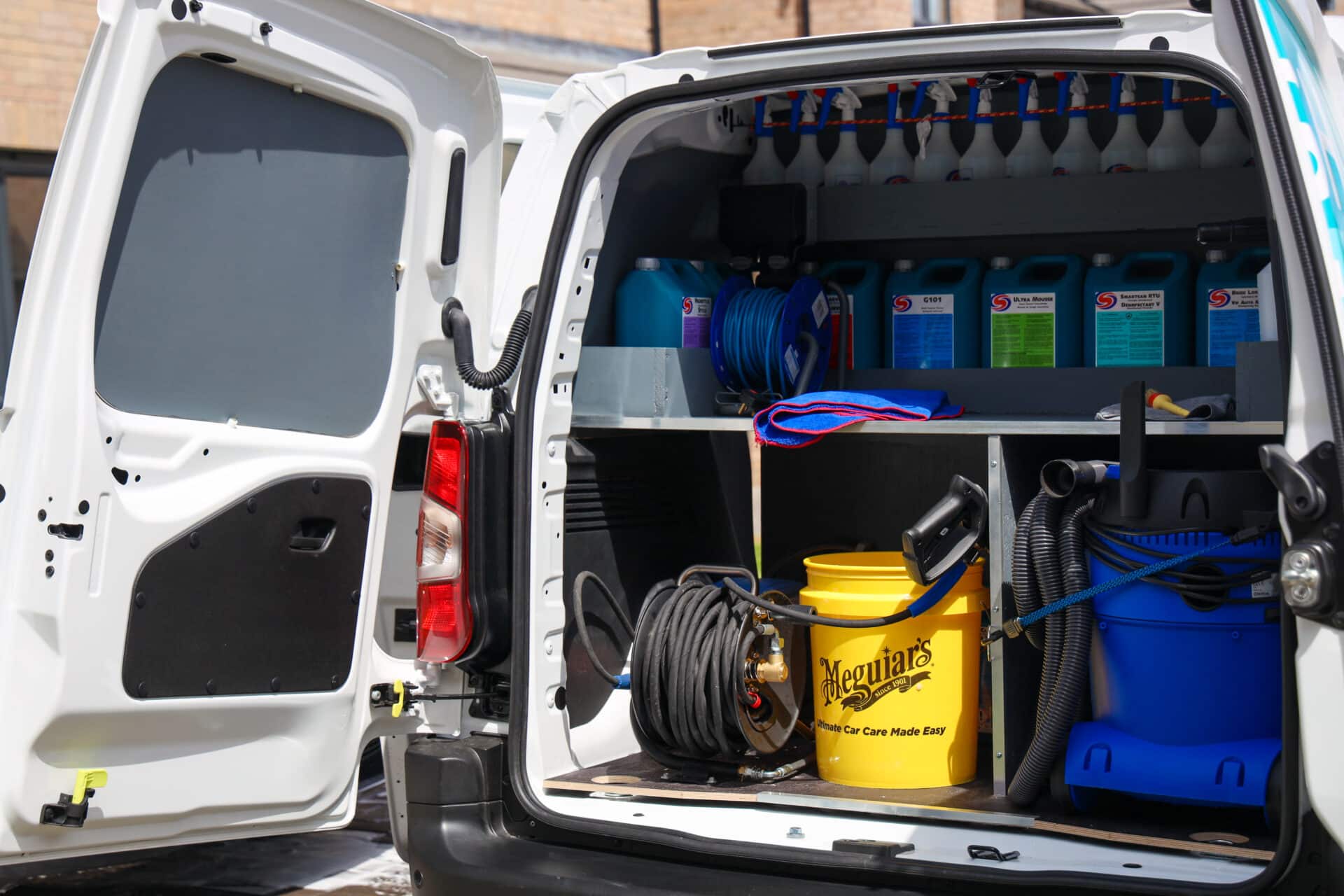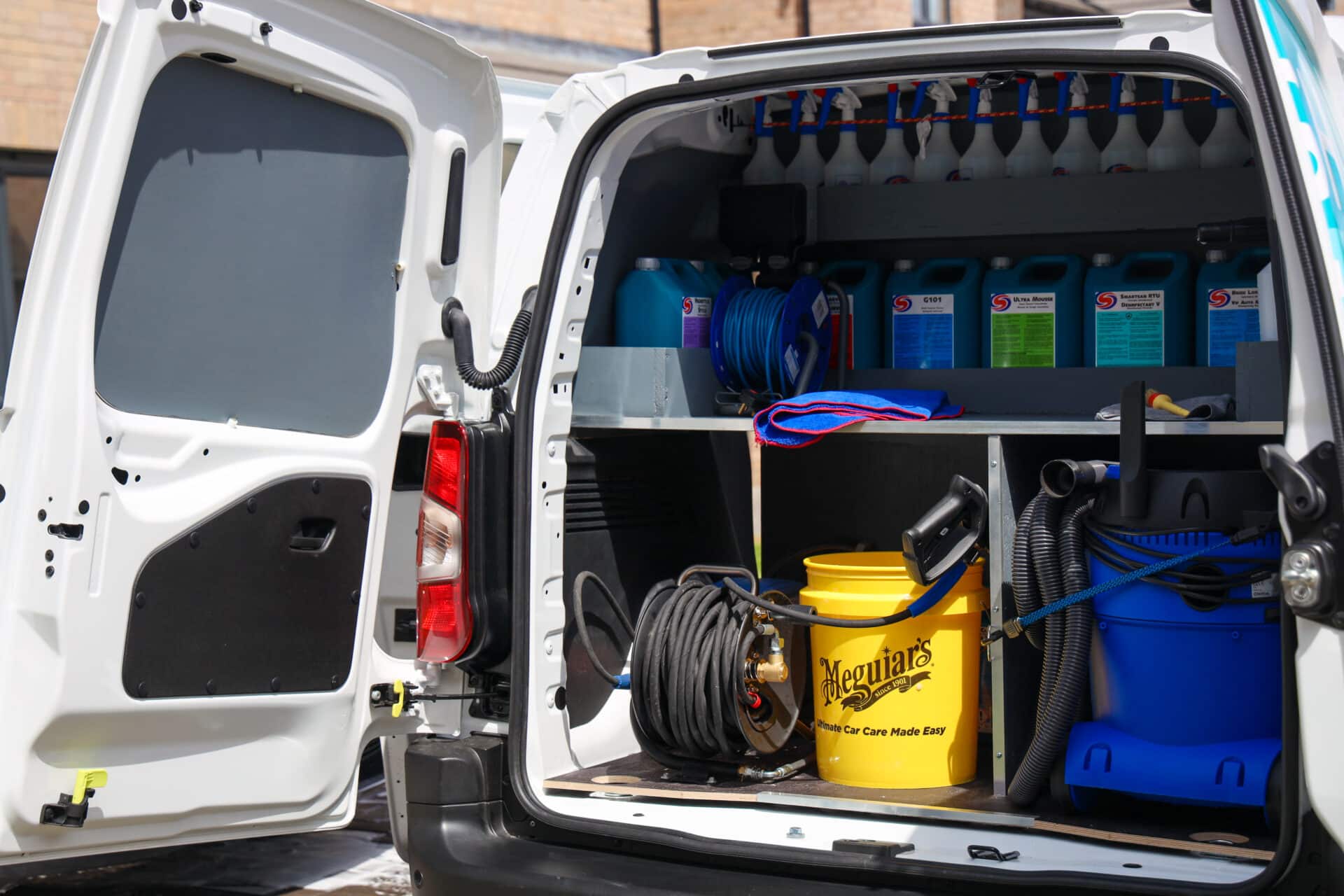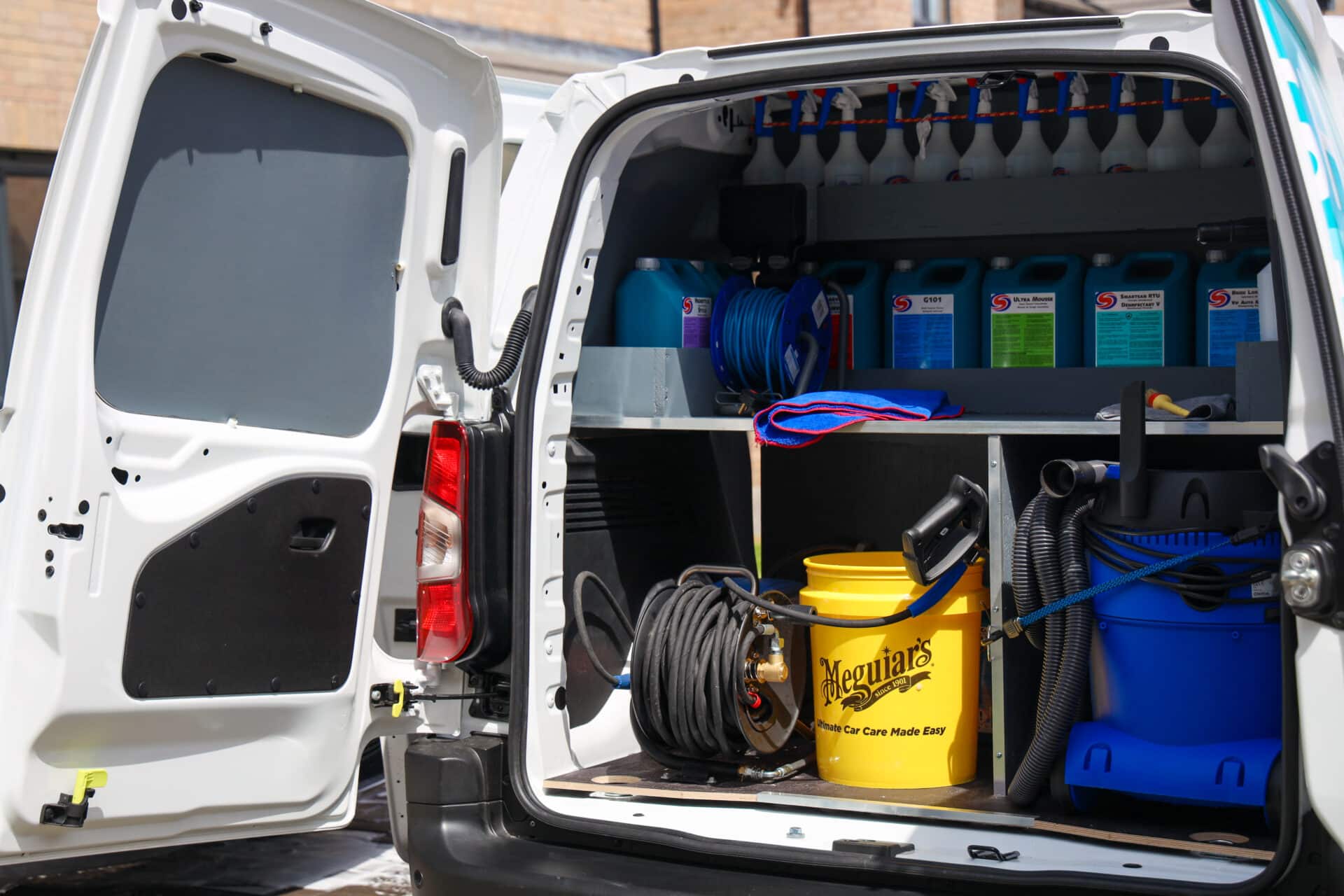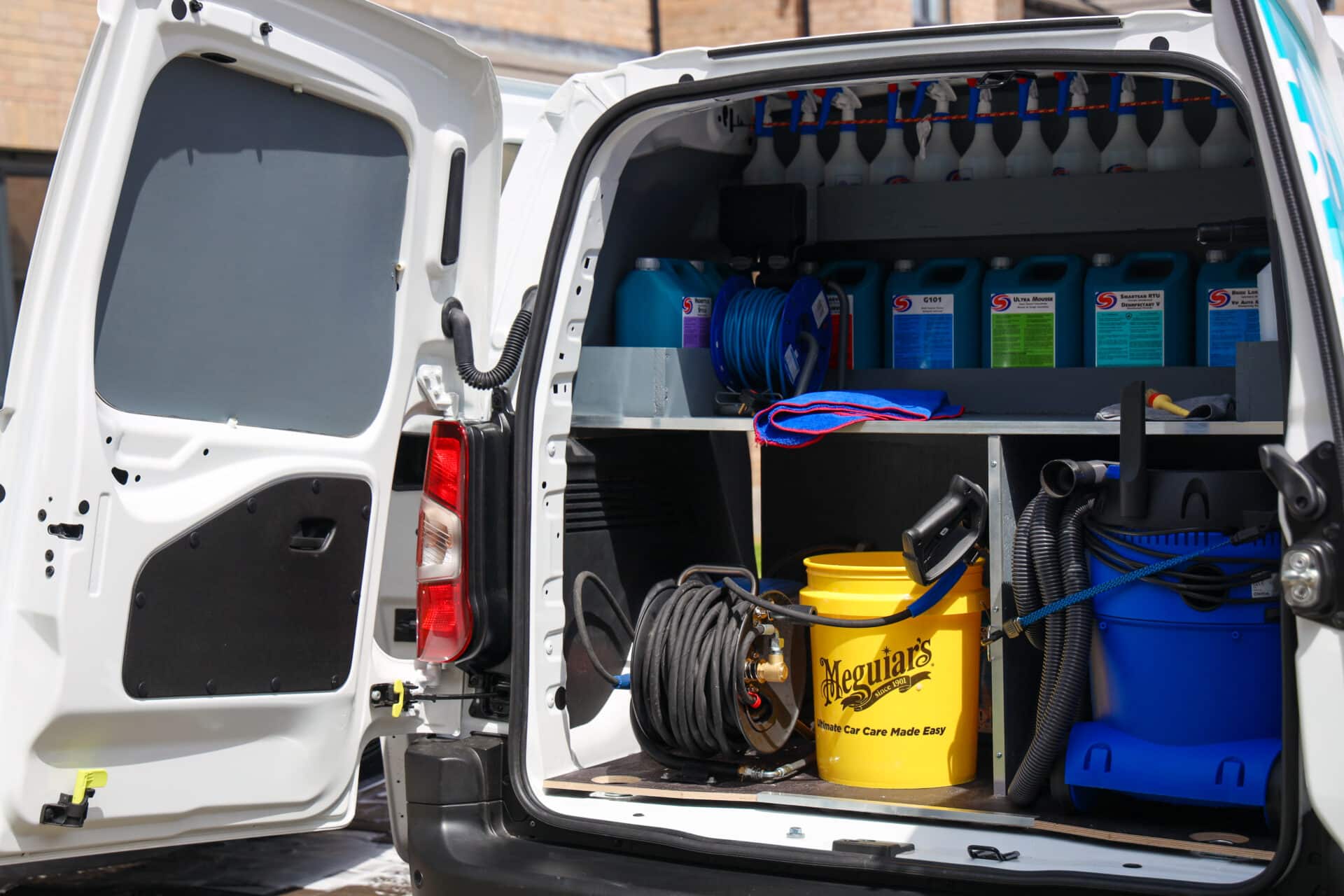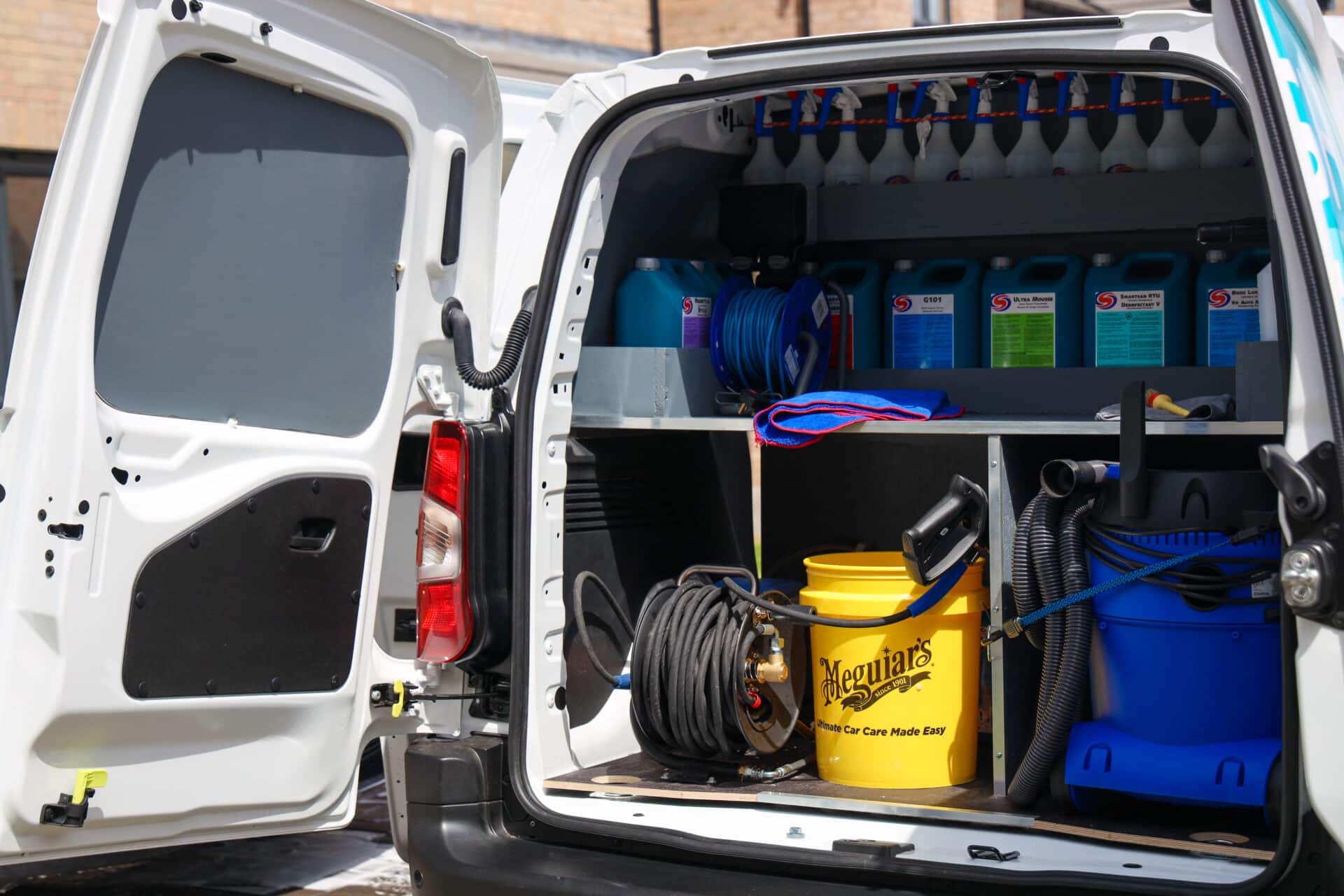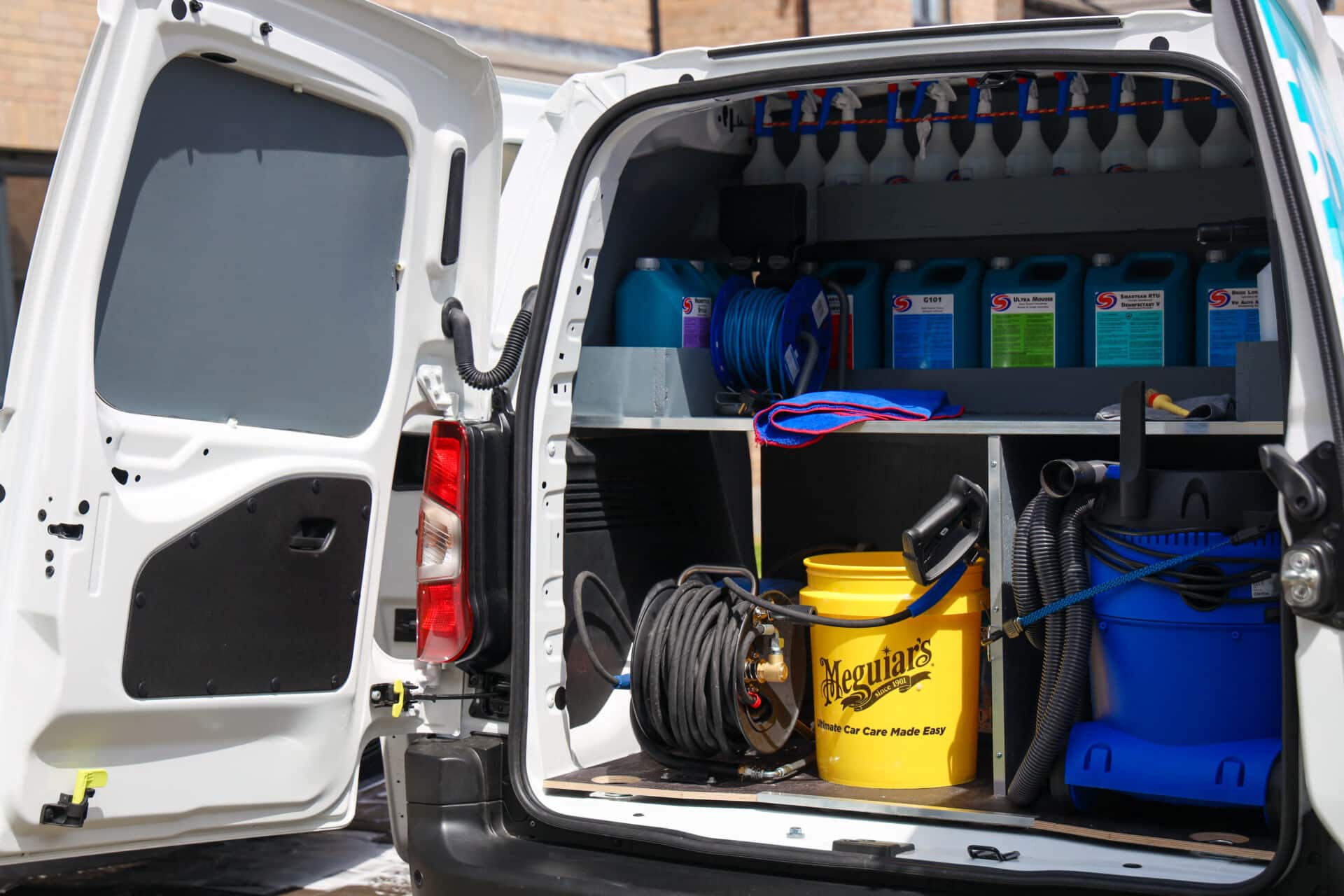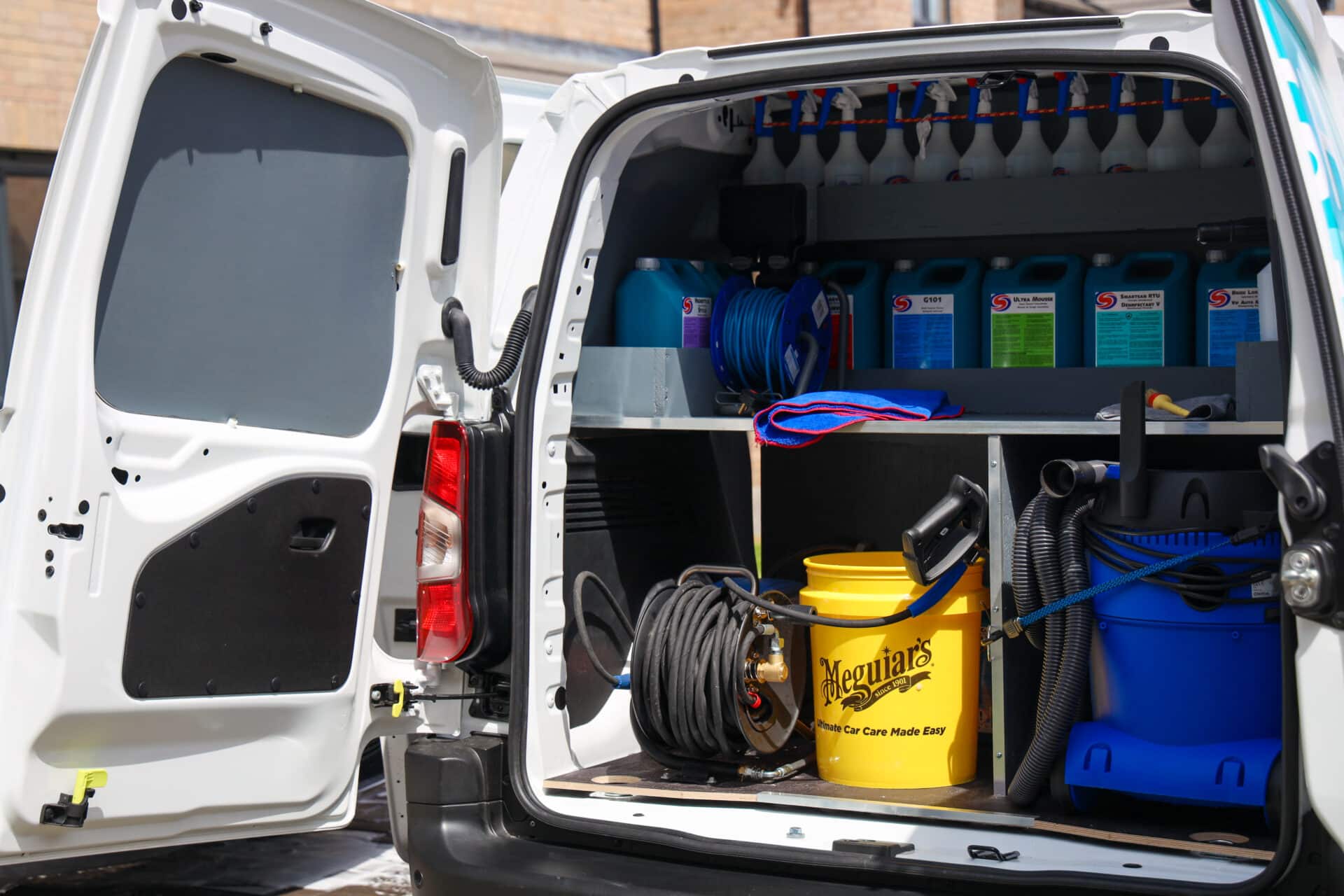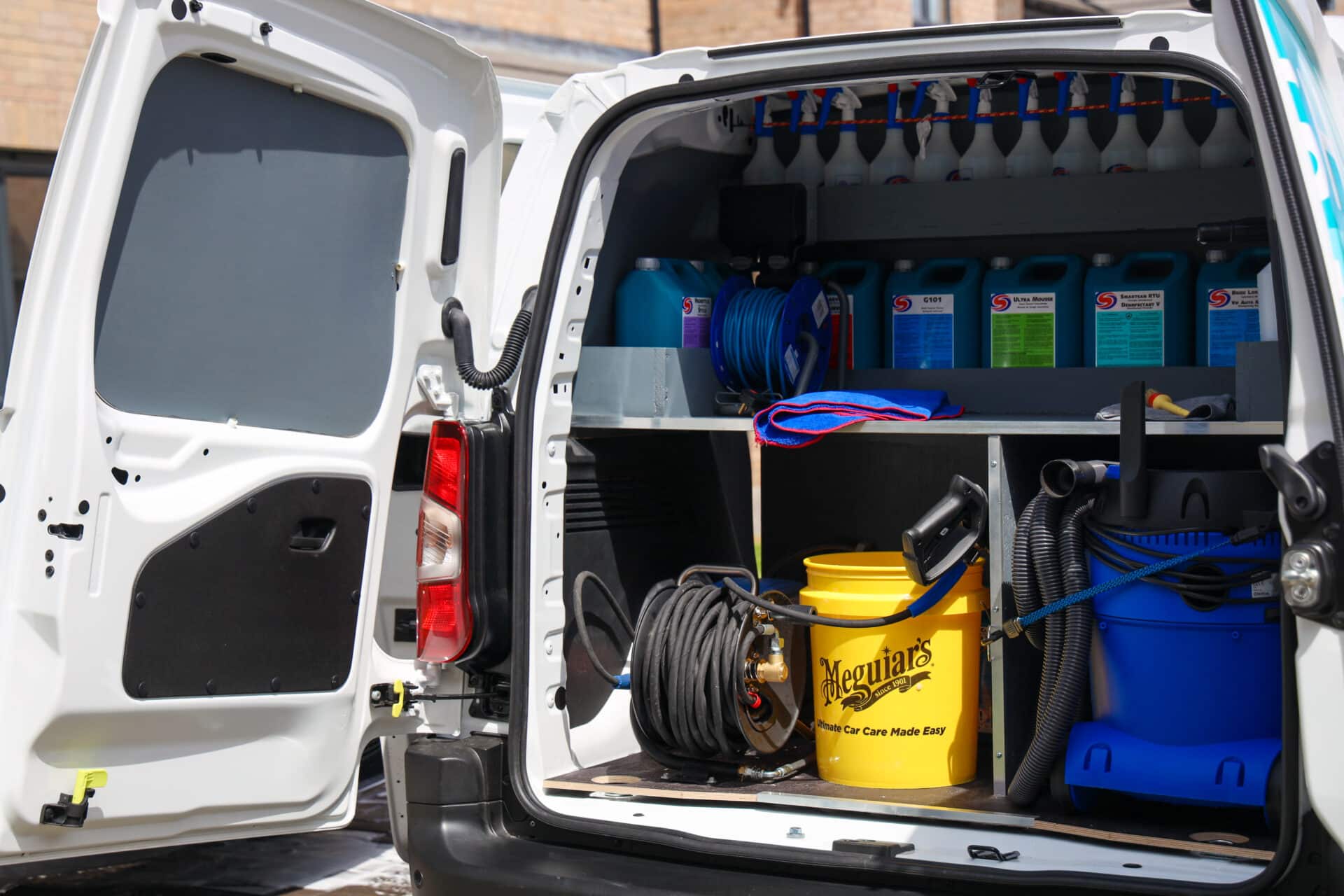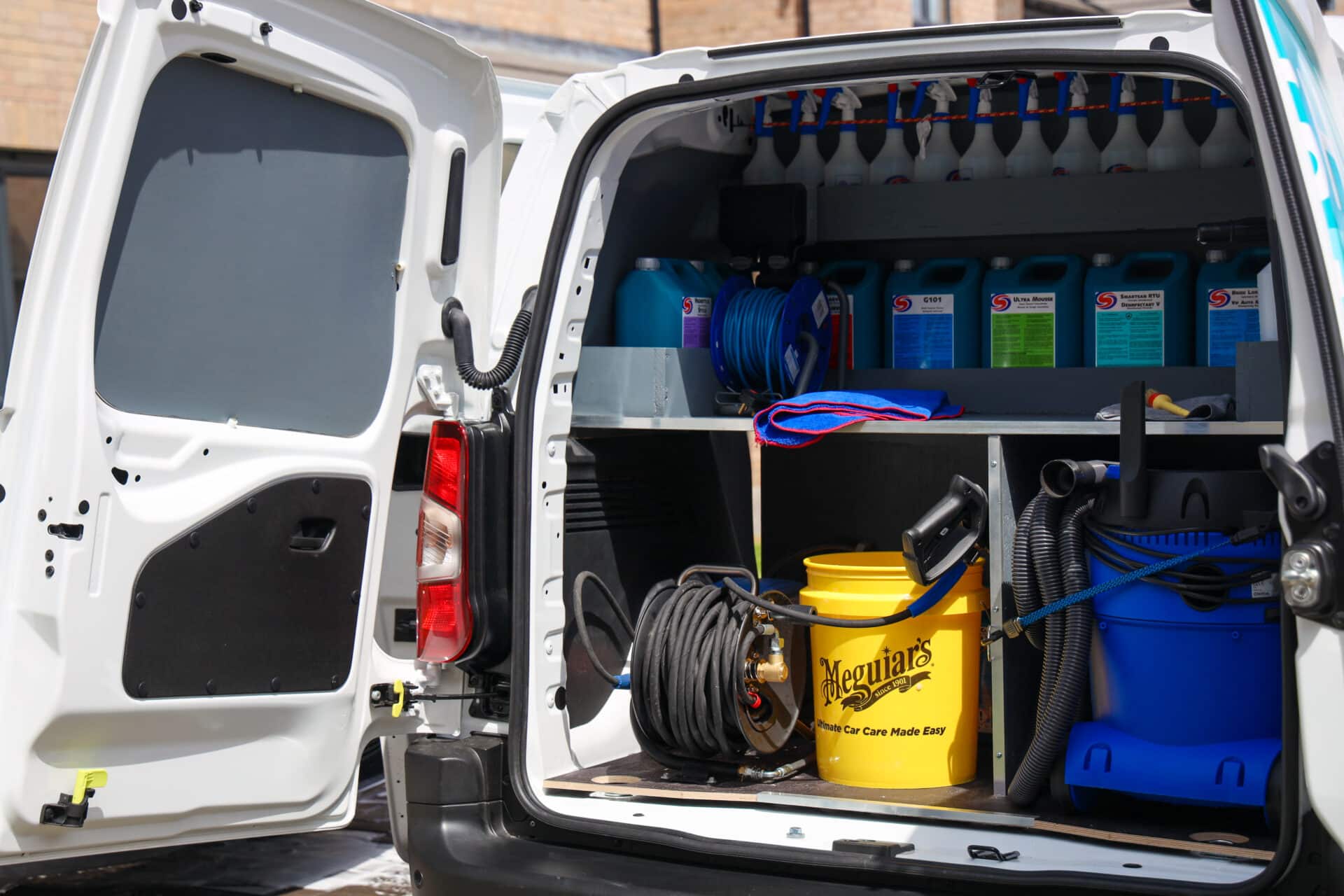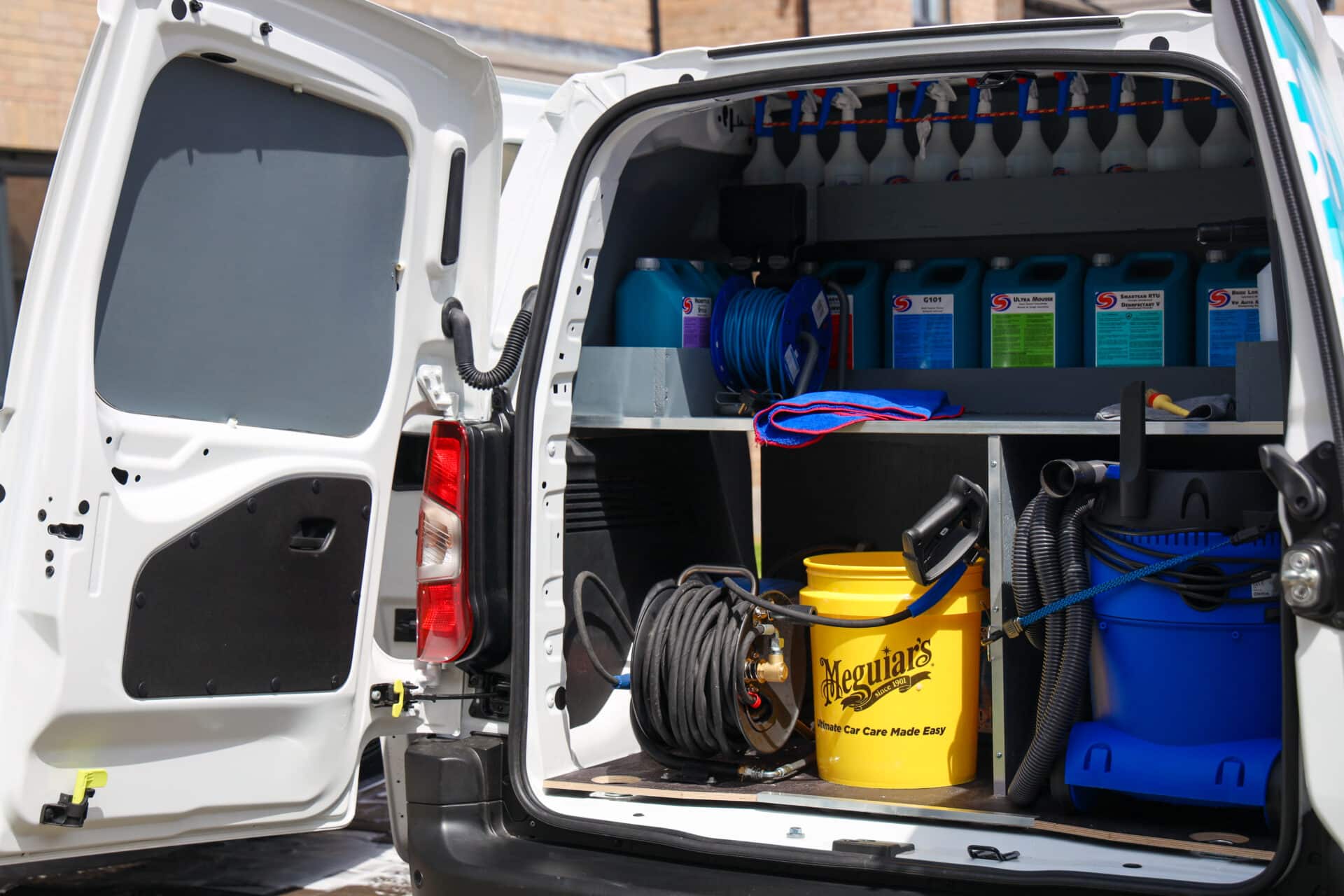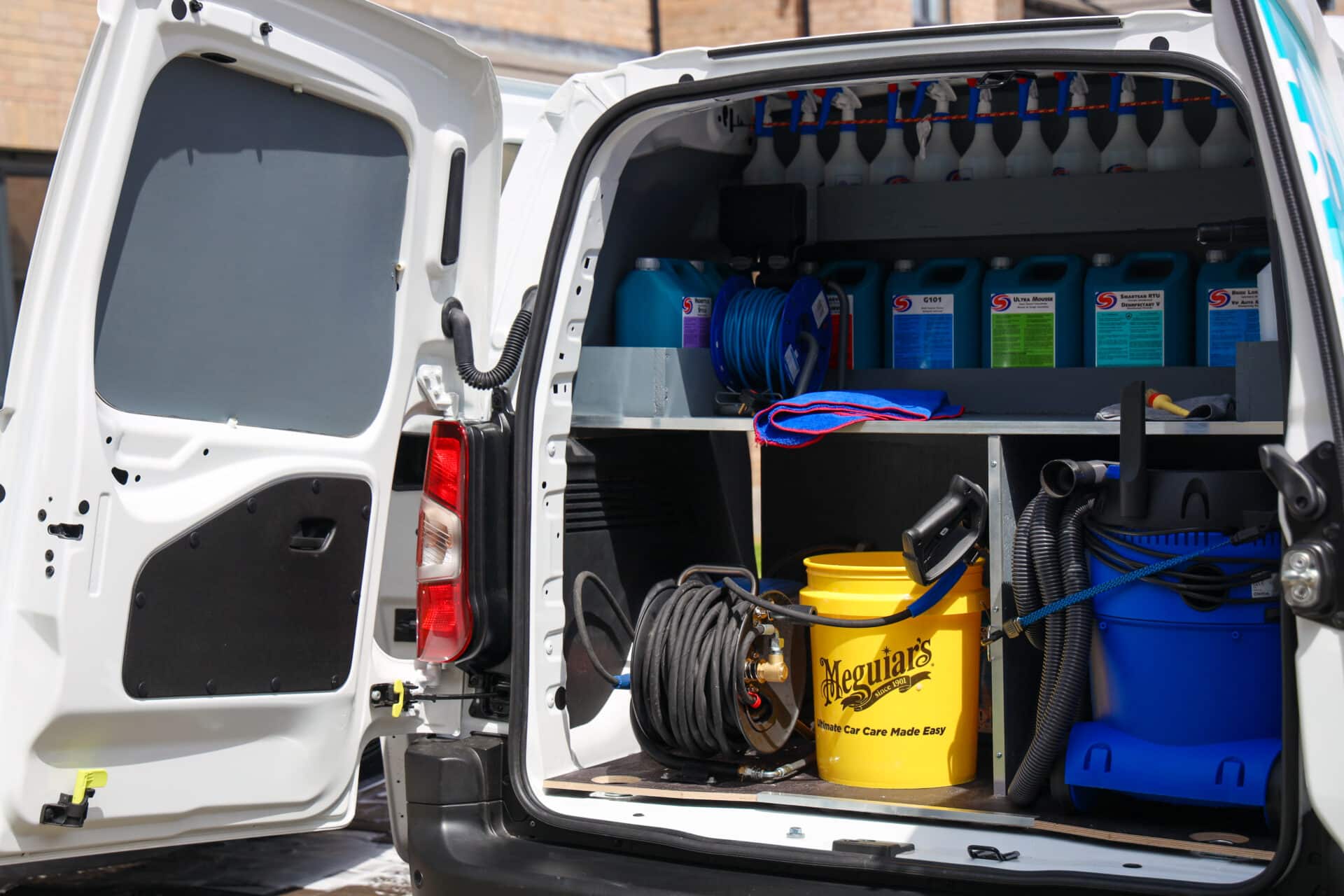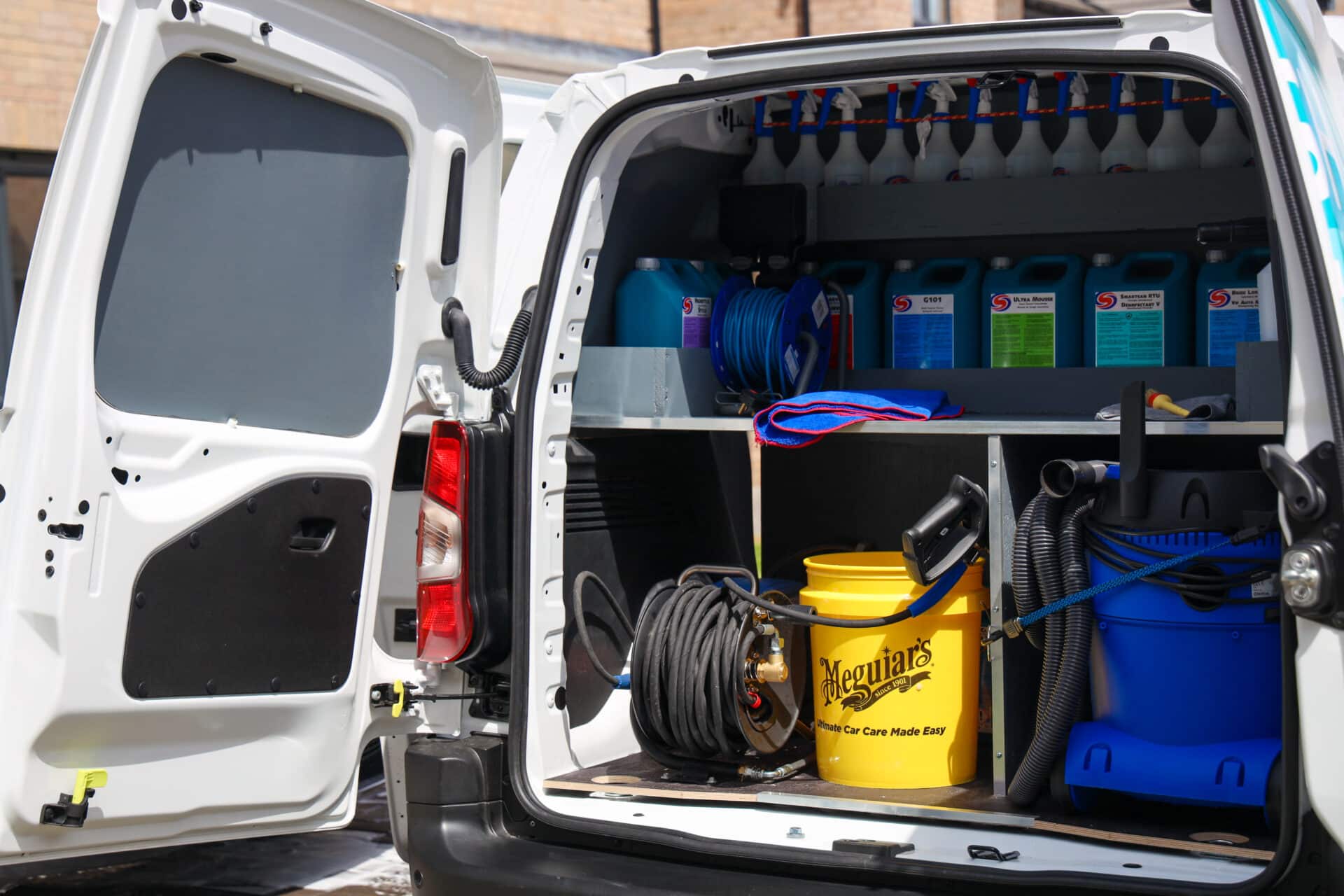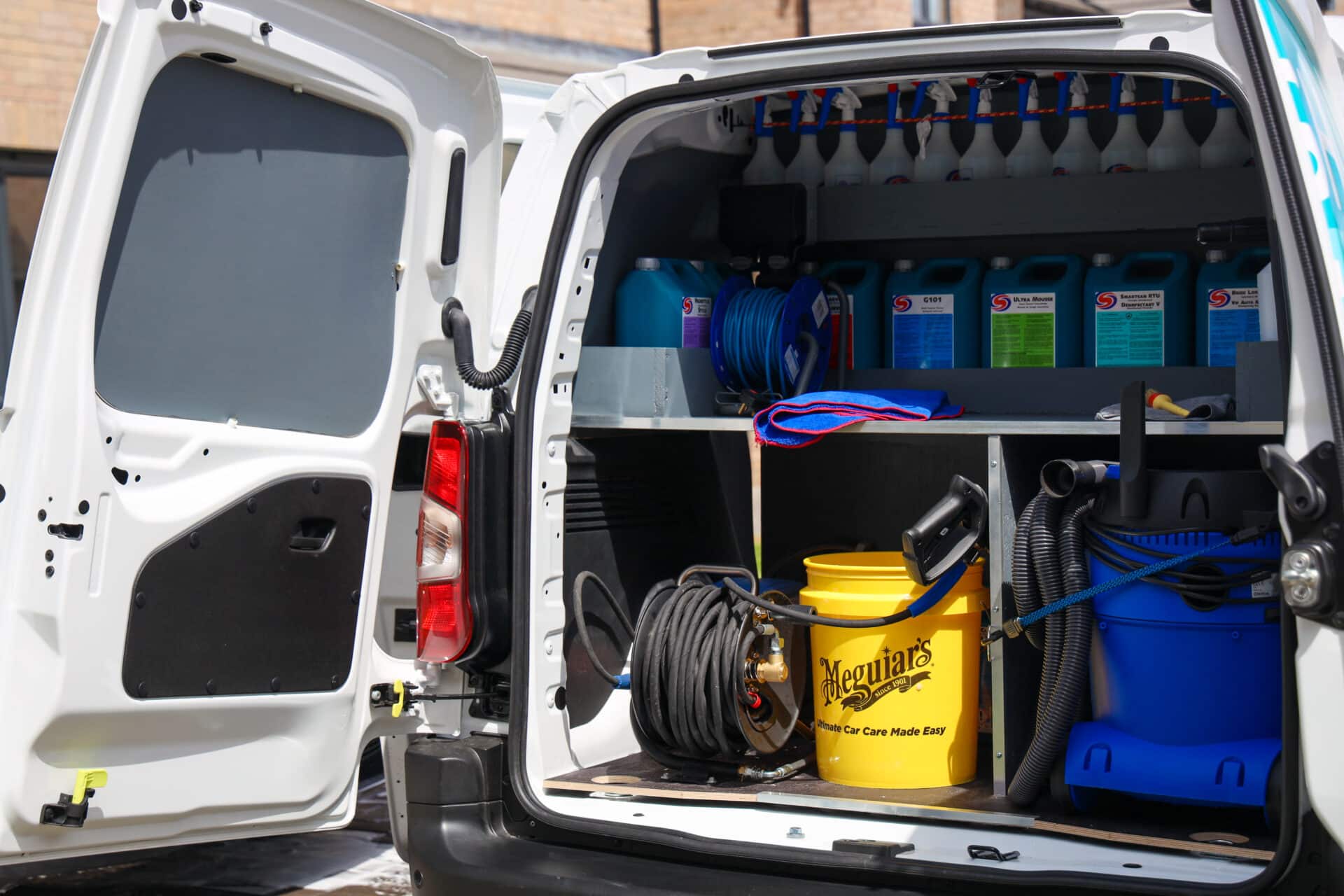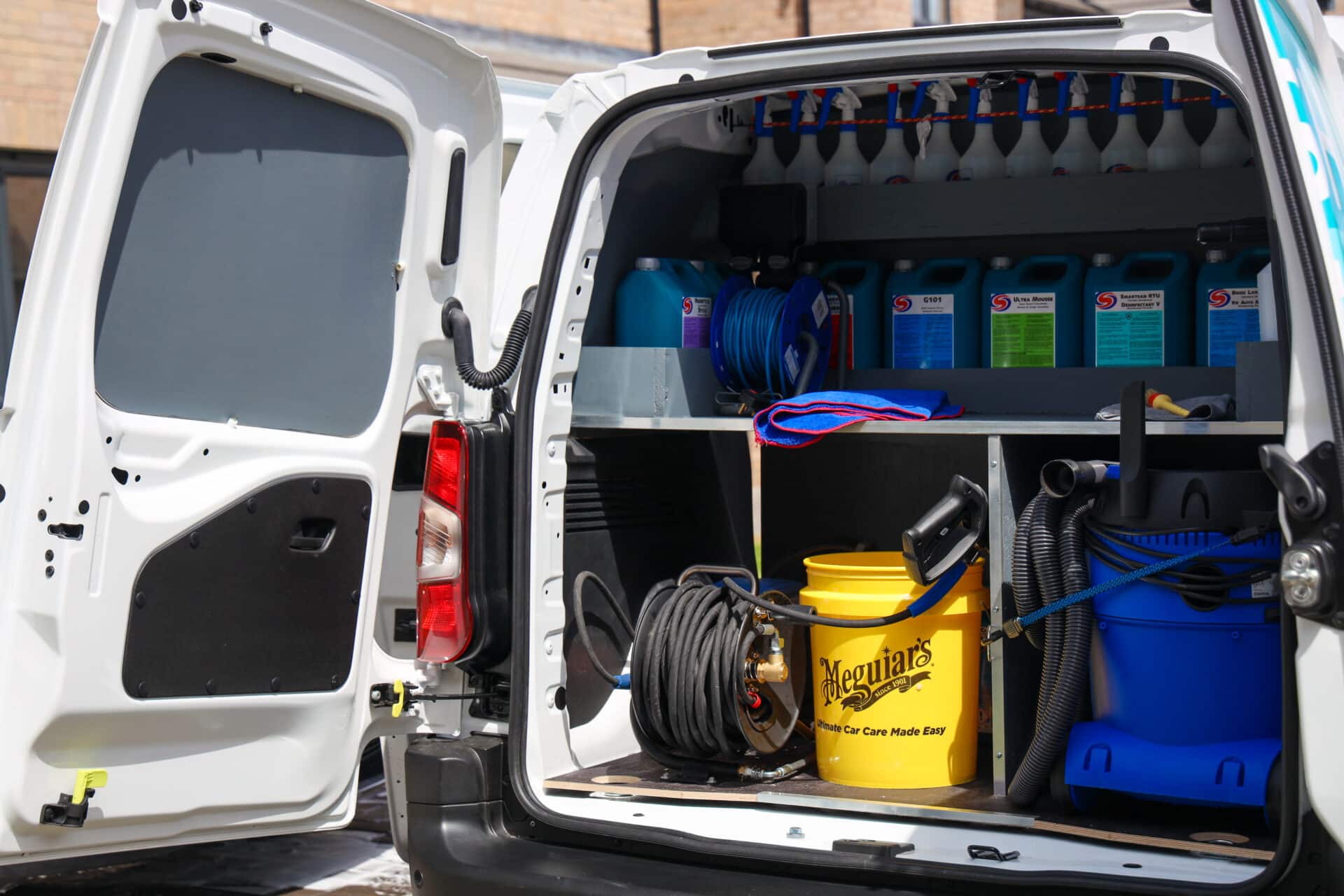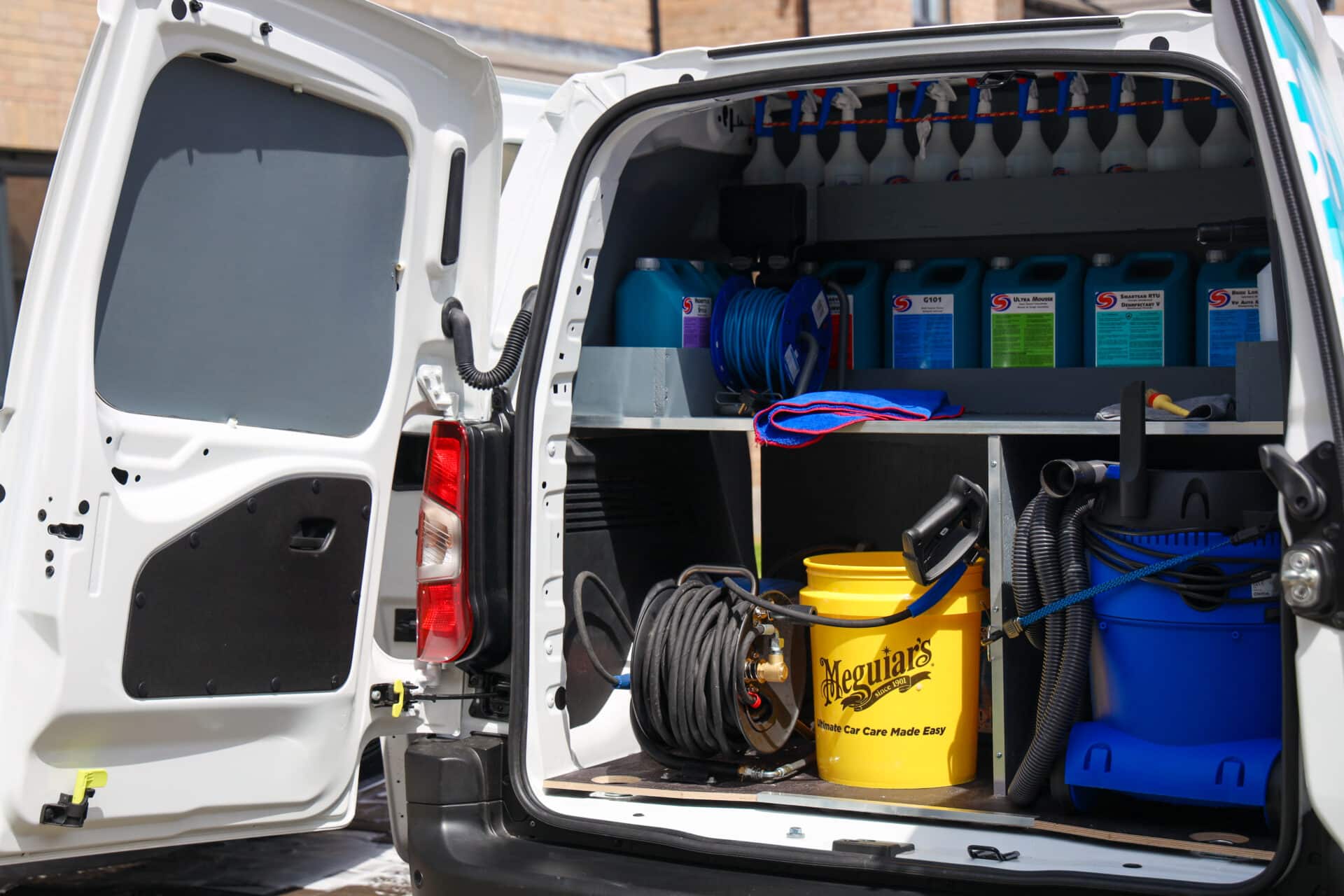Car valeting services have become increasingly popular across the UK, with mobile car valet businesses offering convenient on…
Car Valet Chemical Liability Insurance: Protecting Your Business from Hazardous Substance Claims
The car valeting industry relies heavily on specialized chemicals to deliver professional cleaning results. From powerful degreasers and acidic wheel cleaners to protective waxes and interior treatments, these substances are essential for achieving the high standards customers expect. However, the use of chemicals in car valeting operations creates significant liability risks that standard business insurance may not adequately cover.
Chemical liability insurance for car valet businesses provides crucial protection against claims arising from the storage, handling, and use of cleaning chemicals. This specialized coverage addresses the unique risks faced by mobile valeters, fixed-site operations, and franchise businesses that work with potentially hazardous substances daily.
Understanding Chemical Liability Risks in Car Valeting
Car valet businesses face numerous chemical-related liability exposures that can result in costly claims and legal action. Understanding these risks is the first step in securing appropriate insurance protection.
Environmental contamination represents one of the most significant risks. Chemical spills during storage, transport, or application can contaminate soil, groundwater, or surface water. Even small quantities of concentrated cleaning products can cause environmental damage requiring expensive remediation. Mobile valeters face particular challenges when working at customer premises, where spills may affect private property or public areas.
Third-party property damage claims can arise when chemicals cause unintended harm to vehicles, buildings, or other property. Acidic wheel cleaners that damage alloy wheels, degreasers that strip paint, or interior cleaners that cause fabric discoloration can result in substantial compensation claims. The cost of repairing or replacing damaged vehicles often exceeds the value of the valeting service by thousands of pounds.
Personal injury claims present another major liability concern. Chemical exposure can cause skin burns, respiratory problems, or allergic reactions in customers, employees, or members of the public. Even properly diluted chemicals can cause harm if individuals have sensitivities or if accidental exposure occurs during application.
Gradual pollution liability is an often-overlooked risk that can have serious financial consequences. Repeated small chemical releases over time can accumulate to cause significant environmental damage. Standard liability policies typically exclude gradual pollution, making specialized chemical liability coverage essential.
Types of Chemicals Used in Car Valeting
Modern car valeting operations use a wide range of chemicals, each presenting different liability risks that must be properly managed and insured.
Acidic products are commonly used for removing mineral deposits, brake dust, and stubborn stains. These include hydrofluoric acid-based wheel cleaners, phosphoric acid rust removers, and citric acid-based products. While effective, acidic chemicals can cause severe burns, corrode metal surfaces, and create toxic fumes if mishandled.
Alkaline cleaners and degreasers are essential for removing oil, grease, and organic soiling. Sodium hydroxide-based products, ammonia solutions, and caustic degreasers can cause chemical burns, respiratory irritation, and environmental damage if released inappropriately.
Solvent-based products including paint thinners, tar removers, and adhesive solvents present fire risks and health hazards. These chemicals can cause nervous system damage, skin sensitization, and environmental contamination if not properly contained.
Oxidizing agents such as hydrogen peroxide-based cleaners and chlorine bleach solutions can cause severe chemical burns and react dangerously with other substances. Improper storage or mixing can result in toxic gas generation or explosive reactions.
Specialized treatments including ceramic coatings, paint protection films, and nano-coatings often contain complex chemical formulations with unknown long-term effects. As these products become more common, liability risks may evolve in unpredictable ways.
Coverage Provided by Chemical Liability Insurance
Chemical liability insurance for car valet businesses provides comprehensive protection against the financial consequences of chemical-related incidents.
Third-party liability coverage protects against claims for bodily injury or property damage caused by chemical exposure or contamination. This includes medical expenses, compensation payments, and legal defense costs when customers, employees, or members of the public suffer harm from chemical exposure.
Environmental liability coverage addresses the costs of cleaning up chemical spills and contamination. This includes emergency response costs, soil and groundwater remediation, waste disposal, and restoration of affected areas. Coverage typically extends to both sudden and gradual pollution events.
Product liability protection covers claims arising from defective or contaminated chemical products. If a chemical supplier provides a defective product that causes damage during valeting operations, this coverage can protect against resulting claims while the business pursues recovery from the supplier.
Professional indemnity coverage may be included to protect against claims that chemical selection or application methods were inappropriate for the specific vehicle or situation. This is particularly important for high-end vehicle valeting where incorrect product choice could result in expensive damage.
Business interruption coverage helps replace lost income when chemical incidents force temporary closure of operations. This might occur following a major spill requiring site decontamination or when regulatory authorities suspend operations pending investigation.
Legal defense coverage provides access to specialist environmental and product liability lawyers who understand the complex regulations governing chemical use and disposal. Legal costs can quickly escalate in chemical liability cases, making this coverage essential.
Factors Affecting Chemical Liability Insurance Costs
Several factors influence the cost of chemical liability insurance for car valet businesses, and understanding these can help in managing premiums while maintaining adequate coverage.
Business size and turnover directly impact insurance costs, with larger operations typically paying higher premiums due to increased exposure. However, larger businesses may benefit from economies of scale and better risk management systems that can help reduce rates.
Types and quantities of chemicals used significantly affect pricing. Businesses using only mild, biodegradable products will typically pay less than those using strong acids, caustic cleaners, or solvent-based products. The volume of chemicals stored and used also influences risk assessment.
Storage and handling procedures are carefully evaluated by insurers. Proper chemical storage facilities, spill containment systems, and handling protocols can significantly reduce premiums. Businesses with poor storage arrangements or inadequate safety measures face higher costs or coverage restrictions.
Location factors including proximity to water sources, residential areas, or environmentally sensitive sites affect pricing. Mobile valeters working in various locations may face different risk assessments than fixed-site operations with controlled environments.
Claims history plays a crucial role in determining premiums. Businesses with previous chemical-related claims face higher costs, while those with clean records may qualify for no-claims discounts. Implementing robust risk management following any incidents can help minimize long-term premium impacts.
Staff training and qualifications influence risk assessment. Businesses with formally trained staff, COSHH assessments, and documented safety procedures typically receive more favorable rates than those without proper training programs.
Risk Management and Prevention Strategies
Effective risk management is essential for minimizing chemical liability exposure and maintaining affordable insurance coverage.
Proper chemical storage is fundamental to risk control. Chemicals should be stored in appropriate containers, segregated according to compatibility, and kept in secure, well-ventilated areas away from heat sources and incompatible materials. Secondary containment systems should be installed to prevent spills from spreading.
Staff training programs must cover chemical hazards, safe handling procedures, emergency response, and first aid. Regular refresher training ensures knowledge remains current as new products are introduced. Training records should be maintained to demonstrate compliance with health and safety regulations.
COSHH assessments are legally required for all hazardous substances used in the workplace. These assessments identify risks, specify control measures, and establish safe working procedures. Regular reviews ensure assessments remain accurate as products and processes change.
Personal protective equipment must be provided and used appropriately. This includes chemical-resistant gloves, eye protection, respiratory equipment, and protective clothing suitable for the specific chemicals being used. Equipment must be regularly inspected and replaced as needed.
Emergency procedures should be established for chemical spills, exposure incidents, and other emergencies. Staff must know how to respond quickly and effectively to minimize harm and environmental impact. Emergency contact information and spill kits should be readily available.
Supplier relationships play an important role in risk management. Working with reputable chemical suppliers who provide comprehensive safety data sheets, training support, and technical assistance helps ensure proper product selection and use.
Regulatory Compliance Requirements
Car valet businesses using chemicals must comply with numerous regulations, and insurance coverage should align with these requirements.
COSHH regulations require assessment and control of health risks from hazardous substances. Failure to comply can result in prosecution and may void insurance coverage. Regular reviews ensure ongoing compliance as regulations evolve.
Environmental regulations govern chemical storage, use, and disposal. The Environment Agency regulates waste disposal, water discharge, and pollution prevention. Non-compliance can result in prosecution and cleanup costs that insurance may not cover.
Transport regulations apply when moving chemicals between locations or to customer premises. ADR regulations govern the transport of dangerous goods, requiring proper packaging, labeling, and documentation. Mobile valeters must ensure compliance when carrying chemicals in vehicles.
Workplace health and safety regulations require risk assessments, safety training, and protective measures for employees. The Health and Safety Executive can prosecute businesses that fail to protect workers from chemical hazards.
Planning permission and environmental permits may be required for chemical storage and use, particularly for fixed-site operations. Operating without proper permissions can void insurance coverage and result in enforcement action.
Choosing the Right Chemical Liability Insurance
Selecting appropriate chemical liability insurance requires careful consideration of business-specific risks and coverage needs.
Coverage limits should reflect the potential scale of chemical-related claims. Environmental cleanup costs can easily exceed £100,000, while third-party liability claims may reach similar levels. Aggregate limits should account for the possibility of multiple incidents during the policy period.
Policy exclusions must be carefully reviewed to ensure critical risks are covered. Standard exclusions may include gradual pollution, intentional acts, or specific types of chemicals. Understanding exclusions helps identify gaps that may require additional coverage.
Territorial coverage should match business operations. Mobile valeters working across multiple locations need coverage that extends to all operating areas. International coverage may be required for businesses operating near borders or serving international clients.
Claims handling procedures should be evaluated to ensure rapid response when incidents occur. Insurers with 24-hour claims reporting and specialist environmental response teams can help minimize damage and costs following chemical incidents.
Risk management support from insurers can provide valuable assistance in developing safety procedures, training programs, and compliance systems. Some insurers offer discounts for businesses that implement recommended risk management measures.
The Claims Process for Chemical Liability
Understanding the claims process helps ensure rapid and effective response when chemical incidents occur.
Immediate notification to insurers is crucial following any chemical incident, even if no claim is initially apparent. Many policies require notification within specific timeframes, and delayed reporting can affect coverage.
Emergency response should prioritize safety and environmental protection. This may involve evacuating areas, containing spills, and notifying emergency services. Insurers often provide access to specialist response contractors who can minimize damage and costs.
Documentation of incidents is essential for claims processing. This includes photographs, witness statements, chemical safety data sheets, and records of response actions taken. Thorough documentation helps establish the cause and extent of damage.
Expert assessment may be required to determine the extent of environmental contamination or property damage. Insurers typically arrange for specialist consultants to assess cleanup requirements and estimate costs.
Regulatory liaison is often necessary when chemical incidents occur. Insurers with experience in environmental claims can help navigate regulatory requirements and minimize the risk of enforcement action.
Cost-Effective Coverage Solutions
Several strategies can help car valet businesses obtain comprehensive chemical liability coverage at reasonable cost.
Risk pooling through trade associations or buying groups can provide access to specialized coverage at competitive rates. Group schemes often include risk management support and claims handling expertise specific to the valeting industry.
Deductible selection affects premium costs, with higher deductibles reducing premiums but increasing out-of-pocket costs when claims occur. Businesses should balance premium savings against their ability to fund deductibles.
Multi-year policies can provide premium stability and may include rate guarantees that protect against sudden increases. However, businesses must ensure coverage remains adequate as operations evolve.
Combined policies that include chemical liability alongside other business coverages may provide cost savings compared to separate policies. However, care must be taken to ensure adequate limits for each type of coverage.
Risk improvement programs offered by some insurers can provide premium discounts for businesses that implement recommended safety measures. These programs often pay for themselves through reduced premiums and improved safety performance.
Future Considerations and Emerging Risks
The car valeting industry continues to evolve, creating new chemical liability risks that businesses must consider.
New chemical formulations including nano-coatings, ceramic treatments, and bio-based cleaners may present unknown long-term risks. Insurance coverage should be flexible enough to adapt to emerging risks as they become apparent.
Environmental regulations are becoming increasingly strict, with new requirements for chemical registration, use restrictions, and disposal methods. Businesses must stay current with regulatory changes to maintain compliance and insurance coverage.
Customer expectations for environmentally friendly products are driving changes in chemical selection. While eco-friendly products may reduce some risks, they may also create new liability exposures that require insurance consideration.
Technology developments including automated application systems and remote monitoring may change risk profiles. Businesses adopting new technologies should review insurance coverage to ensure adequate protection.
Climate change may affect chemical stability, storage requirements, and environmental risks. Extreme weather events could increase the likelihood of chemical releases and contamination incidents.
Conclusion
Chemical liability insurance is an essential protection for car valet businesses that use hazardous substances in their operations. The potential costs of chemical-related claims can easily exceed the resources of most small businesses, making comprehensive insurance coverage a critical business requirement.
Effective risk management, regulatory compliance, and appropriate insurance coverage work together to protect car valet businesses from the financial consequences of chemical incidents. By understanding the risks, implementing proper safety measures, and securing adequate insurance protection, businesses can continue to use the chemicals necessary for professional results while protecting their financial future.
The investment in chemical liability insurance and risk management pays dividends through reduced claim frequency, lower insurance costs, and protection against potentially catastrophic losses. For car valet businesses serious about long-term success, comprehensive chemical liability coverage is not optional – it's essential business protection.


 0330 127 2333
0330 127 2333
